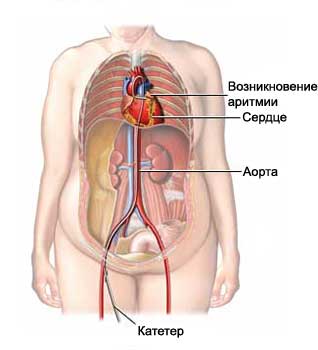Cardiac cryoablation
Description cryoablation heart
Krioabljacija uses the effect of extremely low temperatures for cell disruption. Cardiac cryoablation is used to destroy abnormal cells of the heart.
Causes cryoablation of cardiac
The procedure is done to “shut off” heart cells, which create irregular heartbeat (arrhythmia). After the procedure, normal heart rhythm should be restored.
Possible complications after cardiac cryoablation
Complications are rare, but no procedure does not guarantee the absence of risk. Before, how to perform the procedure, you need to know about possible complications, which may include:
- Bleeding;
- Infection;
- Pain at the site of catheter insertion;
- Blood clots;
- Injury of the blood vessels and the heart;
- Abnormal heart rhythm;
- Heart attack;
- Puncture of the heart.
Factors, that may increase the risk of complications include:
- Smoking
The risk level can be associated with a particular type of arrhythmia.
How is cryoablation?
Preparation for the procedure
Doctor, probably, perform these steps::
- Electrophysiological study (EFI heart), to pinpoint the location of the abnormal rhythms;
- Asked to stop taking the medicine, previously used for the treatment of arrhythmia.
In the run-up procedure:
- Do not eat or drink anything for eight hours before the procedure;
- Follow your doctor's instructions.
Anesthesia
Buda introduced a local anesthetic. He numb the area, where the catheter will be inserted. You will also receive a mild sedative through an IV in the arm. This will help you relax during the procedure.
Description of the procedure
Special ablation catheter is inserted into a blood vessel in the groin, upper thigh, hand or wrist. The area the catheter is cleaned and anesthetized using anesthetic.

The catheter is inserted into an artery and is fed to the blood vessels in the heart. The doctor will be able to see the catheter on the special X-ray machine.
The doctor is the source of the arrhythmia. This will be done by determining the place of arrhythmia special catheter tip. Once the problem areas will be found, it is cooled down with the tip of the catheter. If the place is a source of arrhythmia found correct, the problem goes away. If the place chosen by mistake, the cold end of the catheter is removed and the tissue will not have any injuries.
When the location of the arrhythmia is detected properly, end of the catheter is cooled to -70 ° C. It numbs the heart tissue and eliminate the arrhythmia. Search procedure is repeated, until you have removed all sources of arrhythmia.
Immediately after treatment
You will be moved to the recovery room. Staff will monitor the vital signs within a few hours to detect the symptoms of pain, problems with heart rhythm, bleeding from the catheter site.
You must lie on your back for a period of time. On the spot, where the catheter was inserted, It can be bandaged to prevent bleeding. It is important to follow the instructions of nurses and doctors.
How long will the procedure?
3-6 hours (sometimes more).
Will it hurt?
You may feel some minor discomfort during the catheter. It may also feel dizzy, cardiopalmus, chest pain during freezing.
The average hospital stay
Most patients have to stay in hospital overnight for observation. The doctor can extend the stay, If there are complications.
Caring for the patient after cryoablation heart
Care in a hospital
- The catheter insertion site may be bruised and sore;
- If the catheter was inserted into the groin area need some time to lay in bed with straight legs;
- If the catheter was introduced in the wrist or arm, you do not need to stay in bed;
- Catheter insertion site will be monitored for signs of bleeding, edema or inflammation;
- Will monitor vital parameters.
Home Care
When you return home after the procedure, follow these steps:, to ensure the normal recovery:
- Take aspirin intended for 2-4 weeks. This will help reduce the risk of blood clots in the catheter insertion site;
- You can return to normal activities, allowed walking or climbing stairs. Refrain from heavy physical exertion, or for 24 hours. In most cases, you can return to normal activity within a few days;
- Timely need to pay visits to the doctor. Catheter insertion site should be checked for complications.
In this procedure, an extremely high success rate and low risk of complications. But:
- In the presence of Atrial Fibrillation or ventricular tachycardia, perhaps, will have to continue antiarrhythmic therapy;
- After cryoablation of the AV node, you need a pacemaker.
Contact a physician after cardiac cryoablation
After returning home, you need to see a doctor, If the following symptoms:
- Signs of infection, including fever and chills;
- Redness, edema, increased pain, bleeding, or releasing a catheter insertion site;
- Leg, in which the catheter is inserted, freezes, turns white or blue, numb or tingling occurs;
- Cough, breathlessness, chest pain, or severe nausea or vomiting;
- Discomfort in the jaw, Breast, neck, hand, or upper back;
- Dizziness and weakness.
